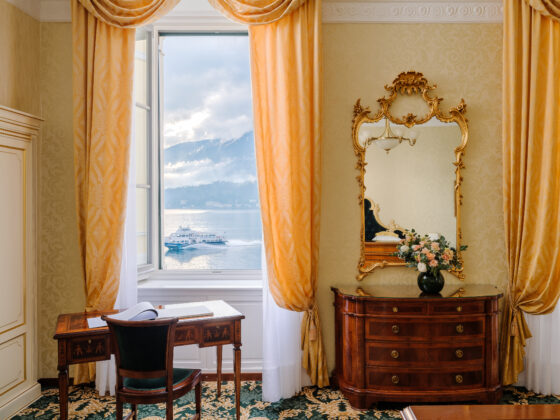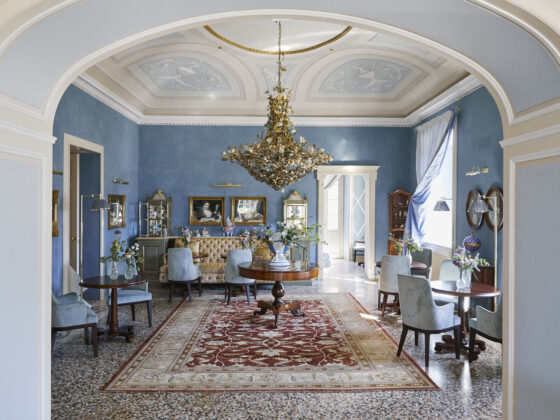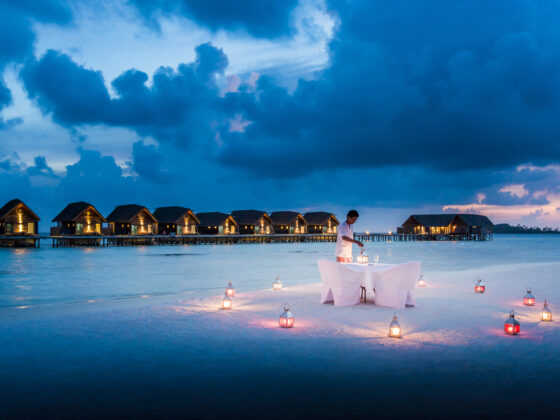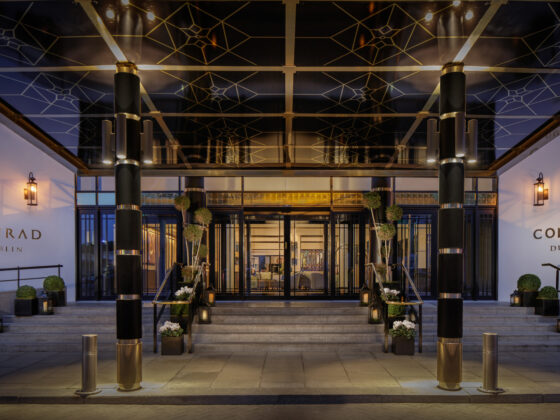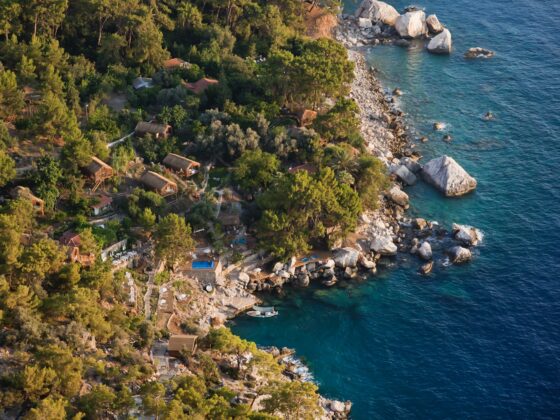by ISMAEL DAVID MUJAHID
To the first time visitor, North Sumatra can seem daunting in the beginning. The province is simply staggering, with forests and jungles that teem with wildlife, over half a dozen cultures co-existing peacefully, and a metropolis that has become a symbol of Indonesia’s modernity and diversity. I would see all that and more on a trip that took me from the big city to the highlands, across linguistic lines, into tribal territory, and the largest volcanic lake on earth. Far from daunting, it was the adventure of a lifetime, one that showed me, in its majestic landmarks and inspiring people, a taste of what makes this country so special.

Here in North Sumatra, all roads seem to lead to and from Medan, the island’s largest city. It has practically become a byword for sleek and urban life thanks to developments like the Kuala Namu Airport and the towers dominating its skyline. Located less than a two-hour flight from Kuala Lumpur and Singapore, the city is a perfect first stop en route to some of the province’s greatest highlights. And thanks to a number of architectural masterpieces and its position as a cultural melting pot, Medan remains a major destination in its own right.
North Sumatra’s Big City
Medan, as a major city, is home to a large number of ethnic groups and faiths. Muslims, Christians, and Hindus; Malays, Minangkabau, and Batak; the city prides itself on being a microcosm of North Sumatra itself.
Our guide Endro, an expert from Java, said, “Medan, as the capital of North Sumatra, is the gateway to Lake Toba and other natural wonders.
“It is also a place with a strong heritage that dates back to its foundation as the capital of a local Sultanate. It was once known as Deli and till today remains an important centre of Malay culture.
“Medan simply has everything. Food, tradition, and people from every part of Sumatra. There really is nowhere like it on the island.”
Our first stop was the Maimoon Palace. Constructed by Sultan Ma’moen Al Rasyid Perkasa Alamsyah in 1888, it’s beige walls and massive complex have lured visitors of all ages for years. As I stepped onto the palace grounds, scores of men, women, and children streamed up and down the main entrance. Near it, a band prepared played traditional Malay tunes.
Walking into the palace itself was like stepping back in time. The entrance led to a grand hall where images of Deli’s royal family were hung, the golden coloured throne of the sultans dominating the chamber. Locals dressed in traditional clothing walked around taking photos, and, as traditional music seeped into the room, you could just imagine what it must have been like in the sultanate’s heyday. Stern, majestic and richly dressed figures in traditional outfits looked on from frozen portraits in the hall.
“The palace has a combination of styles with stylistic influences inspired by Malay, Arab, Moghul, and European architecture. In fact, the architect of the palace was himself Dutch,” explained Tengku Mohar, a member of Deli’s royal family who kindly showed me around.
“It was used for ceremonial events and to welcome state guests”, he added. “That included Eid and family weddings.”
The furniture, mirrors, and tables were all gifts from the Dutch. Golden flowers crisscrossed the chairs, their crest rail carved into a crown. Old photographs showed life as it once was like in Deli. At the centre, the ruler’s palace shadowed everything around it.
Just a few minutes away is another remnant of the Sultanate that residents of Medan are proud of. The Al-Mashun Grand Mosque is massive and located next to a busy road junction, the largest building around. Like the Maimoon Palace, it combines a number of architectural styles to create something truly unique.

Rendevouz With The King of Fruits
No visit to Medan would be complete without tasting its durian. As any local will tell you, there’s is the best. It would be my first time seeing the ‘king of fruits’. It was immediately clear why some hotels displayed “No Durian” signs, yet I was still up to the challenge.
You could smell it before you saw it. At a roadside restaurant, a sour, almost putrid smell weighed over every table like a cloud.
A waitress placed a huge spiky fruit on our table and cracked it open. Gloves were put down right next to it. All that was left was for me to reach for its cream-covered seeds. At first, the smell overwhelmed my senses. That is, until sweet juice burst into my mouth. I came with plans to have just a single bite. It was nearly 45 minutes before we left.
The taste remained with me into the night, as I watched a group of traditional dancers dressed to the nines perform. Each member of the troupe wore the traditional costume of a different North Sumatran ethnic group. There were red, gold and violet dresses; headwear that resembled beehives and others that seemed to be decked out with flowers.
It was a cultural extravaganza, one a foreigner would be forgiven for thinking involved different countries. Yet this is Indonesia. A place where diversity is not just a word but a way of life. And the troupe’s performance, as they flicked their wrists and danced in unison, was a reminder of what would be waiting for me on my journey into the mountains. Tradition, hospitality, and education in multi-cultural harmony.
The Road To Lake Toba
I rose early for the six-hour journey to Lake Toba. Through serpentine roads winding around jungles and valleys, we made our way to towns like Barastaggi. A wide variety of crops are grown and sold in the area: cabbage, coffee, oranges, bananas, durian, and spices from here make their way to tables across the country and Southeast Asia.
We were deep in the Batak territory, our guides explained.
Rachmat Kurnia Rapollo, Professional Convention Organizer with the Ministry of Tourism and our host in North Sumatra, said, “The Bataknese are one of the province’s main ethnic groups. The natural beauty of their surroundings and traditions passed down from their ancestors are what make them unique and have allowed them to survive and thrive in the distant past and modern world.”
“Lake Toba,” he added, “is already one of Indonesia’s top attractions. It is simply spellbinding, not only for its stunning scenery but the hospitality of the Batak as well.”
I would see straight away just how unique the Batak are. In Barastaggi, mosques, churches, and Buddhist temples could all be found minutes away from each other. In fact, according to our guide Endro, many faiths could be found in a single family.
Walking around, locals excitedly welcomed me in town and even politely qued for selfies at one point. Their smiles added to the warmth of the midday sun.
Back on the road, we headed straight for Sipiso Piso waterfall. There we would get our first glimpse of the great Lake Toba.
The 120-meter waterfall cascades down into the lake, surrounded by evergreen pines that looked endless from the hill we stood on. On our left loomed Toba, flanked by towns and hills. What struck me first was the sheer size of Lake Toba. It was massive, a yawning dark blue expanse.
Toba, according to our guides, was created by the eruption of a supervolcano millennia ago. The crater left behind became a lake, magma from volcano rising to the surface to create Samosir Island, our final stop.
Waiting at the harbour to start my ride across the lake to Samosir, I passed the time drinking coffee with locals. The mood in the towns we passed was relaxed and easygoing, a world away from the madness of city life. It would be well past dusk when we arrived, the lake turning darker shades of blue as the sun slowly sunk away.
If Medan is North Sumatra’s urban and cultural capital, Samosir is its island of serenity. Time seemed to slow, rest and adventure in a natural environment being the theme of our every minute there.
We climbed hills and watched farmers dedicated to their craft toiling with their ploughs. Large grey buffalo grazed and laid about in the sun. Traditional Batak homes, with horned roofs that looked like wings, lurked around every corner.
Our time on the island passed like a dream, with glimpses of Lake Toba, the aroma of coconut rice, and the drowning of locally grown coffee in restaurants making up most of our trip. It was time well spent and over way too soon.
A trip back down the same elevated roads we’d traversed a few days ago seemed a fitting end to our journey. But this was far from goodbye. Medan and Lake Toba still had more to show me. I still had to discover other parts of Sumatra like Palembang, Jambi, and Mount Kerinci. Old friends and new ones awaited for my return. There is a lifetime of adventures to be had on this great island. And, thanks to my experience in Medan and Lake Toba, I wouldn’t have it any other way.



